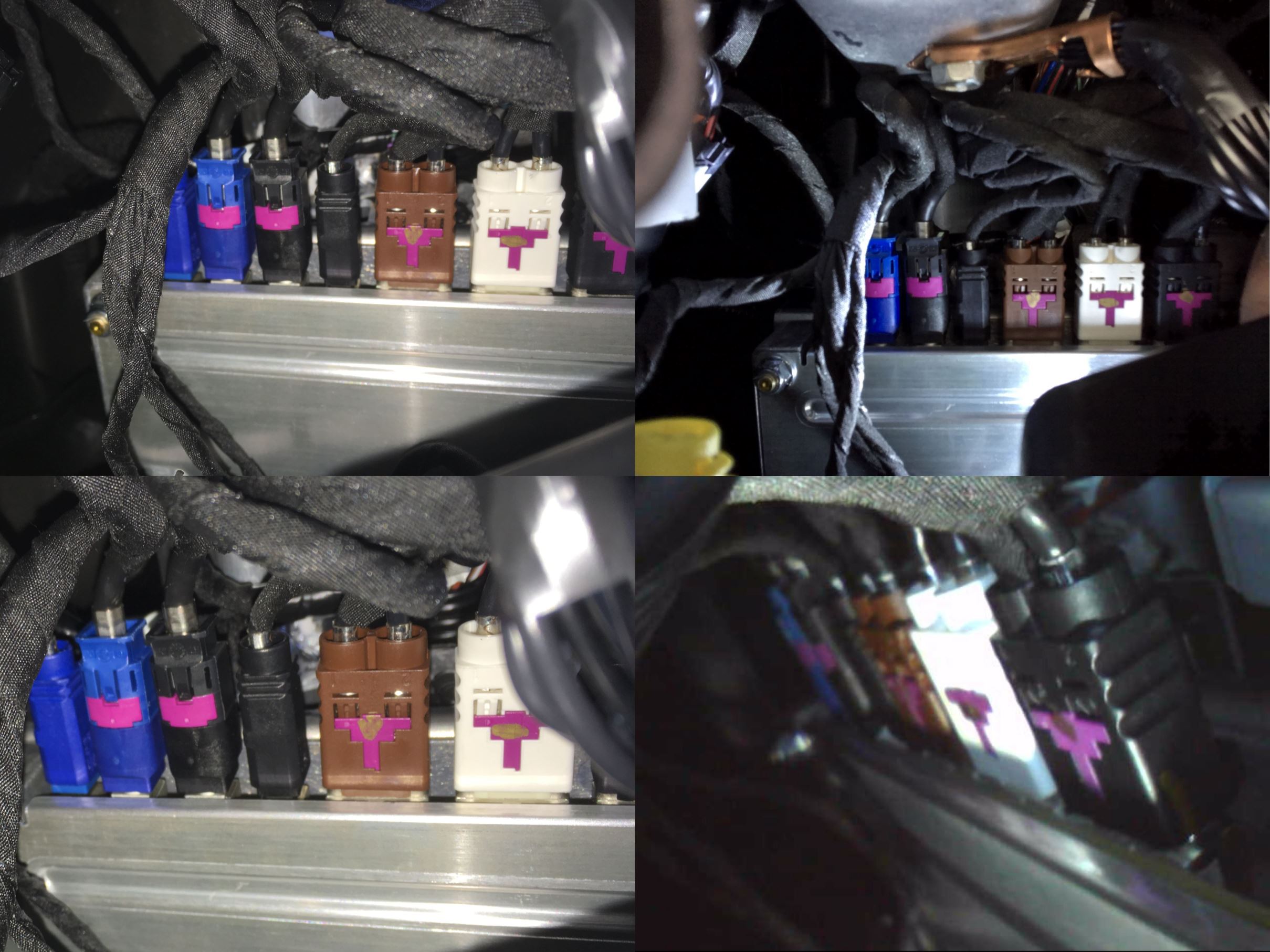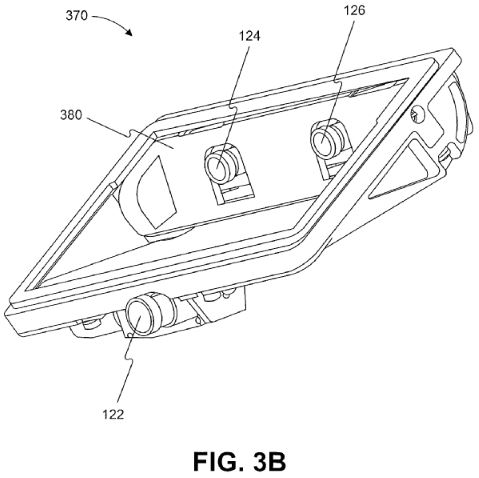Seems like Teslas raw-files have built in GPS metadata. (No values in the specific files you posted, though.)Just added all raw files to Box | Simple Online Collaboration: Online File Storage, FTP Replacement, Team Workspaces
Welcome to Tesla Motors Club
Discuss Tesla's Model S, Model 3, Model X, Model Y, Cybertruck, Roadster and More.
Register
Install the app
How to install the app on iOS
You can install our site as a web app on your iOS device by utilizing the Add to Home Screen feature in Safari. Please see this thread for more details on this.
Note: This feature may not be available in some browsers.
-
Want to remove ads? Register an account and login to see fewer ads, and become a Supporting Member to remove almost all ads.
You are using an out of date browser. It may not display this or other websites correctly.
You should upgrade or use an alternative browser.
You should upgrade or use an alternative browser.
AP2.0 Cameras: Capabilities and Limitations?
- Thread starter lunitiks
- Start date
Well, they are a raw sensor dump, so I don't know how would the coordinates get onto the sensor.Seems like Teslas raw-files have built in GPS metadata. (No values in the specific files you posted, though.)
The snapshot ones from before are generated by the snapshot thread so some of it might be added, I guess.
"IBM PC" is little endian and the arm64 platform used is also little endian, so its a safe bet.Photoshop also opens them with 1280x964, Channels: Count 1, 16 Bits, Header 0. Byte Order IBM PC generates dark grey images, Byter Order Mac generates sort of bright reversed ones.
None of these settings, I think, are ekeing out the full dynamic range, though. They are pretty crappy. More research needed.
Also, the full dynamic range IS there, but our monitors are ill-equipped to display it.
You can use the curves tool to cut the stuff you don't need, or the HDR tool to tonemap it, I guess.
AnxietyRanger
Well-Known Member
"IBM PC" is little endian and the arm64 platform used is also little endian, so its a safe bet.
Also, the full dynamic range IS there, but our monitors are ill-equipped to display it.
You can use the curves tool to cut the stuff you don't need, or the HDR tool to tonemap it, I guess.
Yep, little ensign certainly looks more correct.
That said, I still doubt Photoshop is getting the full range. The histogram is showing very little data.
Tried Lightroom too but no support there.
Well, hystogram is for the full 16bits of data, if the sensor only gives you 10 bits, that's a lot of "empty" space on the histogram.Yep, little ensign certainly looks more correct.
That said, I still doubt Photoshop is getting the full range. The histogram is showing very little data.
Tried Lightroom too but no support there.
So just cut out the empty sides and then see what sort of details are there, I think.
Cutting the red channel and replacign it with something would also help, I guess. I'll probably try to write a tool to do that, but too bad it would lead to loss of some resolution. We can also extract just the red channel to see that separately (would be half the resolution picture obviously).
AnxietyRanger
Well-Known Member
Here are all the connector types -- from each of the cameras into the Drive PX2 -- if anyone cares:
Rosenberger catalogue (#2)
(Note: Search PDF without the final letter - it's just color coding.)
Photos:
- Main: Rosenberger 59Z113-000-A
- Narrow / Fisheye (double): Rosenberger 59Z115-000-A
- B-Pillars (double): Rosenberger 59Z115-000-B
- Side repeaters (double): Rosenberger 59Z115-000-F
- Rearview IN: Rosenberger D4Z001-000-C
- Rearview OUT: Rosenberger D4Z001-000-A
Rosenberger catalogue (#2)
(Note: Search PDF without the final letter - it's just color coding.)
Photos:
Last edited:
Ok, so I have created a very simplistic tool that:
For every red pixel writes it to a separate file (giving you a half resolution image for the red channel only). In place of the red pixels it averages all pixels around them.
Additionally on the sensor there are two rows at the top and 2 at the bottom that are devoid of useful info, but throw off various image manipulation/enhancing programs (I crop it out manually, but need to add this into the tool - TODO)
So I run this tool, get 2 "processed" raw files. Now if you load those into photoshop and use Image->Adjustment->HDR toning and then select Method as "Equalize histogram" (Other options there suddenly do a lot more useful stuff as well.) you get this:


For every red pixel writes it to a separate file (giving you a half resolution image for the red channel only). In place of the red pixels it averages all pixels around them.
Additionally on the sensor there are two rows at the top and 2 at the bottom that are devoid of useful info, but throw off various image manipulation/enhancing programs (I crop it out manually, but need to add this into the tool - TODO)
So I run this tool, get 2 "processed" raw files. Now if you load those into photoshop and use Image->Adjustment->HDR toning and then select Method as "Equalize histogram" (Other options there suddenly do a lot more useful stuff as well.) you get this:
That was exactly what I thought!!! Thank you SO much!!! I've wasted hours trying to figure out how to crop that crap away so I can use the files.Additionally on the sensor there are two rows at the top and 2 at the bottom that are devoid of useful info, but throw off various image manipulation/enhancing programs (I crop it out manually, but need to add this into the tool - TODO)
And hey -- this explains the weird "1280x964" image size
Last edited:
I think we are talking of different things here.That was exactly what I thought!!! Thank you SO much!!! I've wasted hours trying to figure out how to crop that crap away so I can use the files.
The problems I am talikng about are various enhance programs seeing all the "black" pixels and having some bad assumptions resulting in subpar enhancements.
You seem to be talking about "none of the tools I have recognize the format" which cropping a few btes here and there would not help - you either need to get some tools to read raw bitstreeam (like photoshop) or use imagemagick to convert the bitstream into a regular image with headers and such (like that example I provided some time ago).
I've tried Lightroom and dcraw --- no functionada. Error messages about damaged / corrupted file
Reason I'm suspicious about those 4 extra pixels, is this:
Dealing with Damaged RAW Files
(Yes of course I'm in deep waters here)
Reason I'm suspicious about those 4 extra pixels, is this:
Dealing with Damaged RAW Files
(Yes of course I'm in deep waters here)
Last edited:
This setup is from Mobileye's patents (tested on an MS as you can see):I think the sides of the glare shield plastic do limit the fisheye on the sides, but the bonnet/hood may be peeking on the bottom edge of the visible fisheye view, so downwards the glare shield may not be limiting it...
Here's the GPS input port on the back of the MCU (like I said earlier, I'm unsure how this works on AP2, since the GPS antenna-cable now goes to the PX2 (not to the CID), and what happens in the PX2 I don't know):
Isn't the GPS antenna for the CID in the side view mirrors? So maybe the PX2 and CID don't share the GPS antenna.
No the RHS mirror contain WIFI and GSM. The GPS antenna is right below the LED brakelight bar, to the left, under the rear window. Trust me, there's only one GPS antennaIsn't the GPS antenna for the CID in the side view mirrors? So maybe the PX2 and CID don't share the GPS antenna.
Last edited:
Like I said, you won't get Lightroom or dcraw to work on these files, they have no headers.I've tried Lightroom and dcraw --- no functionada. Error messages about damaged / corrupted file
Reason I'm suspicious about those 4 extra pixels, is this:
Dealing with Damaged RAW Files
(Yes of course I'm in deep waters here)
If you have photoshop - use that.
If you don't, install ImageMagick and use the "convert" tool from there as instructed (I will add my interpolation and red channel extraction tool shortly).
Lay it on me(I will add my interpolation and red channel extraction tool shortly)

Ok, the tool is here: GitHub - verygreen/cccr_raw: CCCR raw convertor/red channel extractor for Tesla EAP images along with a modest instruction in the README
Here's a sample wideangle camera processed shot (the B&W version, not the red channel) (+ the Photoshop equalization as per the README):

Here's a sample wideangle camera processed shot (the B&W version, not the red channel) (+ the Photoshop equalization as per the README):
BTW, interesting that you can clearly see ghosting of that reflective thingie at the bottom of the usable image.
Almost looks like it hasn't been mounted on the windscreen properly.
Have you seen page31-32 of the AR0132AT datasheet? Goes into detail about the embedded data/statistics (i.e.histogram) in the frame, Apparently they are using the "embedded data section of the SMIA Function Specification", if that helps.
You are right, that seems to be exactly the mode the sensor is operating at.Almost looks like it hasn't been mounted on the windscreen properly.
Have you seen page31-32 of the AR0132AT datasheet? Goes into detail about the embedded data/statistics (i.e.histogram) in the frame, Apparently they are using the "embedded data section of the SMIA Function Specification", if that helps.
Though for us I suspect the info is not very useful. We do not run some embedded platform for the histogram to matter and the registers - well, we can read them, but does not appear we can get much useful info from them (other than stopping to guess about certain operating parameters).
Similar threads
- Article
- Replies
- 4
- Views
- 2K
- Replies
- 7
- Views
- 310
- Replies
- 3
- Views
- 4K
- Replies
- 30
- Views
- 4K
- Replies
- 30
- Views
- 2K





